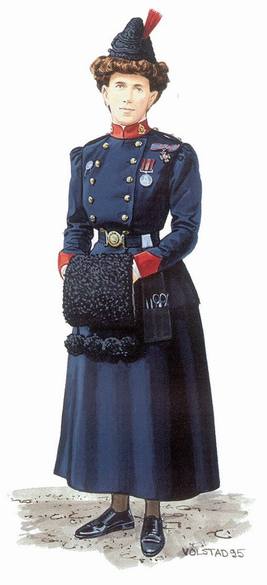|
The lessons learned
in South Africa would be useful. In particular, the experience would
revive Canadians' interest in their militia and, for some, pride in
their army. Canada itself would turn away from its focus on
territorial defence to a gradual involvement in world affairs.
There was nothing to indicate that the conflict might be a prelude
to Canadian participation in a European war, but in some respects it
had been just that, including the opposition between French and
English Canadians. In 1914-18 the leaders, and their arguments and
political tactics, would be similar to those of 1899-1902.
The main shortcomings noted in the Canadian militia during that war
had to do with planning and supply, particularly the replacement in
units of men lost or concluding their contracts. There were also the
improvised medical services. Some of these matters were corrected
with the establishment of, in 1899, the Militia Medical Service and,
in 1904, the Canadian Army Medical Corps. In 1903 the Corps of Royal
Canadian Engineers appeared under the aegis of a former RMC officer
cadet, Lieutenant-Colonel Paul Weatherbe. That same year saw the
appearance of the supply service, the Canadian Army Service Corps
and the Guides and Signals Corps. The Headquarters Corps of Military
Staff Clerks appeared in 1905 and the Canadian Pay Corps in 1906,
though the Pay Corps was not officially operating until 1 July 1907,
with 33 members of all ranks. In 1913 the Canadian Officer Training
Corps had its beginnings in various universities across the country.
During this period, budgets increased, as did maximum volunteer
militia recruitment and daily pay for camp. Extensive properties
were purchased for training, including Petawawa, and exercises were
resumed. In 1899 new rifles and guns were purchased. Training
standards and officer promotion criteria were reviewed, while the
army adopted more practical field uniforms.
After 1902, pressure built up to make the militia an increasingly
Canadian arm of the federal government. As early as January 1900 the
minister responsible, Frederick Borden, was able to gain approval
for the idea of a corps, which he described as provisional, of over
1,000 men, an eight-company battalion to be called the 3rd (Special
Service) Battalion Royal Canadian Regiment of Infantry, to relieve
the British garrison in Halifax, which was needed in South Africa.
In 1905 and 1906 the British garrisons in Halifax and Esquimalt were
permanently replaced by Canadian men. In this process, the ceiling
for the permanent force was raised first from 1,000 to 2,000 men and
then, before 1914, to 4,000 men. Again in 1904, the Militia Council
was formed and command of the militia passed to Canadians. This
signalled the end of the precedence of British officers over
Canadians of similar rank. Canadians' confidence in their military
talents and abilities would encourage them to choose a different
rifle and uniforms somewhat distinct from those of the imperial
troops.

Head nurse in winter uniform, Canadian Nursing Service, circa 1908
Canadian military
nurses served in South Africa, and the Nursing Service was formed in
1901. Initially dressed in khaki for service in South Africa, they
were given more formal uniforms in 1907. This reconstruction by Ron
Volstad shows a nurse's winter uniform. The painting is based on a
photo of Georgina Fane Pope, a woman of exceptional talents who was
the Service's first head. (Canadian Department of National Defence) |
